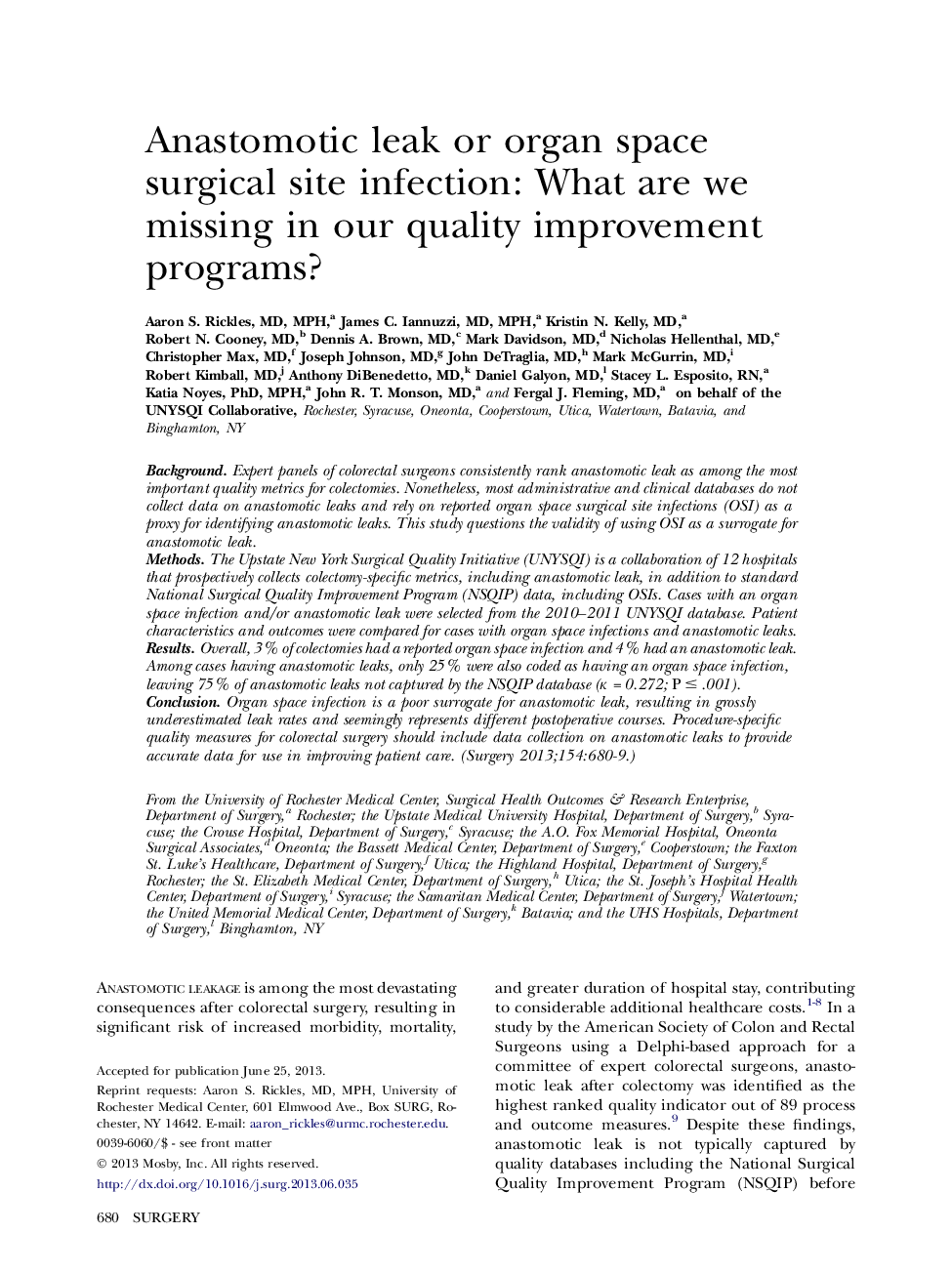| Article ID | Journal | Published Year | Pages | File Type |
|---|---|---|---|---|
| 4307536 | Surgery | 2013 | 10 Pages |
BackgroundExpert panels of colorectal surgeons consistently rank anastomotic leak as among the most important quality metrics for colectomies. Nonetheless, most administrative and clinical databases do not collect data on anastomotic leaks and rely on reported organ space surgical site infections (OSI) as a proxy for identifying anastomotic leaks. This study questions the validity of using OSI as a surrogate for anastomotic leak.MethodsThe Upstate New York Surgical Quality Initiative (UNYSQI) is a collaboration of 12 hospitals that prospectively collects colectomy-specific metrics, including anastomotic leak, in addition to standard National Surgical Quality Improvement Program (NSQIP) data, including OSIs. Cases with an organ space infection and/or anastomotic leak were selected from the 2010–2011 UNYSQI database. Patient characteristics and outcomes were compared for cases with organ space infections and anastomotic leaks.ResultsOverall, 3% of colectomies had a reported organ space infection and 4% had an anastomotic leak. Among cases having anastomotic leaks, only 25% were also coded as having an organ space infection, leaving 75% of anastomotic leaks not captured by the NSQIP database (κ = 0.272; P ≤ .001).ConclusionOrgan space infection is a poor surrogate for anastomotic leak, resulting in grossly underestimated leak rates and seemingly represents different postoperative courses. Procedure-specific quality measures for colorectal surgery should include data collection on anastomotic leaks to provide accurate data for use in improving patient care.
